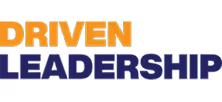Corporate Leadership Development in Long Beach, CA


Leadership Training Corporate Leadership Development in Long Beach, CA
Effective corporate leadership development in Long Beach, CA is essential for organizations that need leaders who can navigate rapid change, manage diverse teams, and deliver measurable results. Whether you operate at the Port of Long Beach, run hospitality and tourism operations, serve regional manufacturing, or lead a technology or higher-education organization, a tailored leadership training program closes gaps in capability, builds a promotable leadership pipeline, and improves organizational performance.
Why Long Beach organizations need focused corporate leadership development
Long Beach’s economy combines port logistics, tourism, higher education, small business, and technology. Local leaders face unique pressures:
- Seasonal tourism and hospitality peaks that demand scalable leadership.
- Complex supply chain and safety challenges tied to port operations.
- Diverse, multicultural workforces requiring inclusive leadership practices.
- Hybrid and frontline workforce dynamics after COVID-19 that affect engagement and alignment.A targeted leadership training program for Long Beach organizations builds practical skills that translate to safer operations, higher retention, better team execution, and stronger local community relations.
Common leadership development issues in Long Beach
Organizations seeking corporate leadership development in Long Beach often identify recurring problems:
- Lack of consistent leadership competencies across departments
- Low succession readiness for critical roles
- Ineffective cross-functional collaboration between operations and administrative teams
- Poorly measured impact of past training investments
- Difficulty translating classroom learning into day-to-day behavior
Our approach to corporate leadership development
A strategic approach moves beyond one-off workshops to integrated solutions that create sustained change. Core components include:
Needs assessment: diagnose before you design
- Organizational alignment review: examine strategy, KPIs, and leadership expectations.
- Data gathering: surveys, 360 feedback, focus groups, and stakeholder interviews with executives and frontline managers.
- Operational mapping: identify critical roles, decision points, and failure modes (for port, logistics, hospitality, etc.).Deliverables: prioritized leadership capability gaps, baseline metrics for engagement, performance, and retention.
Custom program design: practical, experiential, and scalable
- Curriculum built from assessment insights with modular content: executive leadership, first-time manager onboarding, team execution, conflict management, and change leadership.
- Blended learning model: immersive workshops, cohort-based experiential sessions, microlearning, and an online academy component for asynchronous reinforcement.
- Localized scenarios: use Long Beach-specific case studies (port safety, hospitality surges, cross-campus collaboration) to make learning immediately relevant.Deliverables: training blueprint, participant learning paths, materials, and facilitator guides.
Rollout strategy: phased, measurable, and inclusive
- Pilot cohort: test content with a representative group to validate learning objectives and logistics.
- Phased scaling: roll out by function or business unit with train-the-trainer options to embed capability.
- Integration with HR processes: tie development to performance reviews, promotion criteria, and succession plans.Deliverables: rollout calendar, communication plan, facilitator assignments, and participant selection criteria.
Enterprise coaching and leadership development options
- Executive coaching: one-to-one coaching focused on strategic thinking, stakeholder influence, and board-level communication.
- Enterprise coaching: multi-tiered coaching model that supports senior leaders, mid-level managers, and high-potential cohorts.
- Team coaching: cross-functional team interventions to accelerate alignment and execution (ideal for operations at the Port or cross-department initiatives).
- Group coaching pods: cost-effective coaching for cohorts using a structured curriculum and periodic one-to-one touchpoints.Deliverables: coaching charters, cadence schedules, success metrics, and sample coaching plans.
ROI measurement and continuous improvement
- Define success metrics up front: retention, internal promotion rates, engagement scores, leadership 360 improvements, safety incidents, project delivery times, and revenue impact.
- Baseline and follow-up measurement: quantitative and qualitative evaluation at 30, 90, and 180 days post-program.
- Business impact mapping: link behavioral changes to operational KPIs (for example, improved supervisor coaching correlating to reduced turnover in hospitality teams or faster freight throughput at the port).
- Continuous improvement: use follow-up data to refine content and delivery for future cohorts.Deliverables: measurement framework, dashboard templates, and quarterly impact reports.
Examples of organizational impact
- A logistics division reduces safety incidents and improves on-time delivery by standardizing frontline supervisor coaching and decision-making frameworks.
- A hospitality operator increases manager retention and guest satisfaction during peak seasons by training managers in conflict resolution and team scaling practices.
- A university department shortens hiring timelines and improves faculty-staff collaboration by building a bench of promotable leaders through cohort-based development.
- A tech startup accelerates product delivery and cross-team alignment by teaching outcome-based road-mapping and stakeholder communication.
Implementation timeline and expectations
- Typical timeline: 4-10 weeks for needs assessment and custom design; pilot cohort 4-8 weeks; full rollout phased over 3-12 months depending on scale.
- Cohort size and cadence: small cohorts (8-16) for maximal engagement; leadership sprints and practice cycles between sessions to ensure behavior change.
- Resource commitment: executive sponsorship, HR partnership, and dedicated participant time are critical for measurable results.
Scaling and sustaining leadership development
- Train-the-trainer: build internal facilitation capability to sustain programs and lower long-term delivery costs.
- Succession planning: tie development outcomes to promotion readiness and critical role backup.
- Ongoing reinforcement: microlearning, leader check-ins, and performance supports preserve gains and embed new habits.
- Culture and inclusion: design programs that reflect Long Beach’s diverse workforce and build inclusive leadership behaviors.
The bottom-line benefits for Long Beach organizations
Well-designed corporate leadership development in Long Beach, CA creates a measurable leadership pipeline, reduces turnover, improves operational performance, and strengthens community and customer relationships. By grounding programs in local realities—port operations, hospitality seasonality, diverse workforce dynamics, and hybrid work models—organizations gain leaders who are prepared to deliver reliable outcomes and long-term value.

